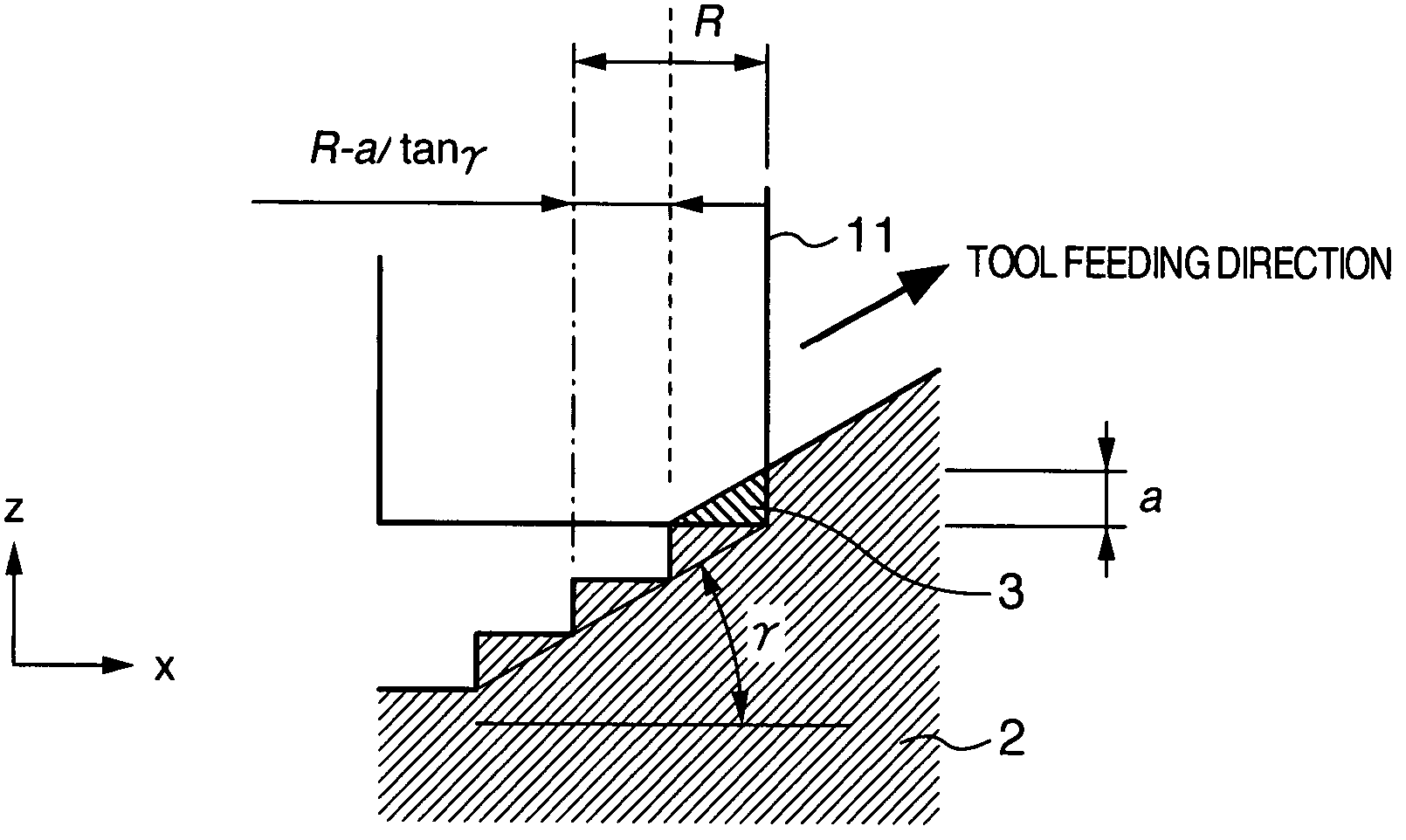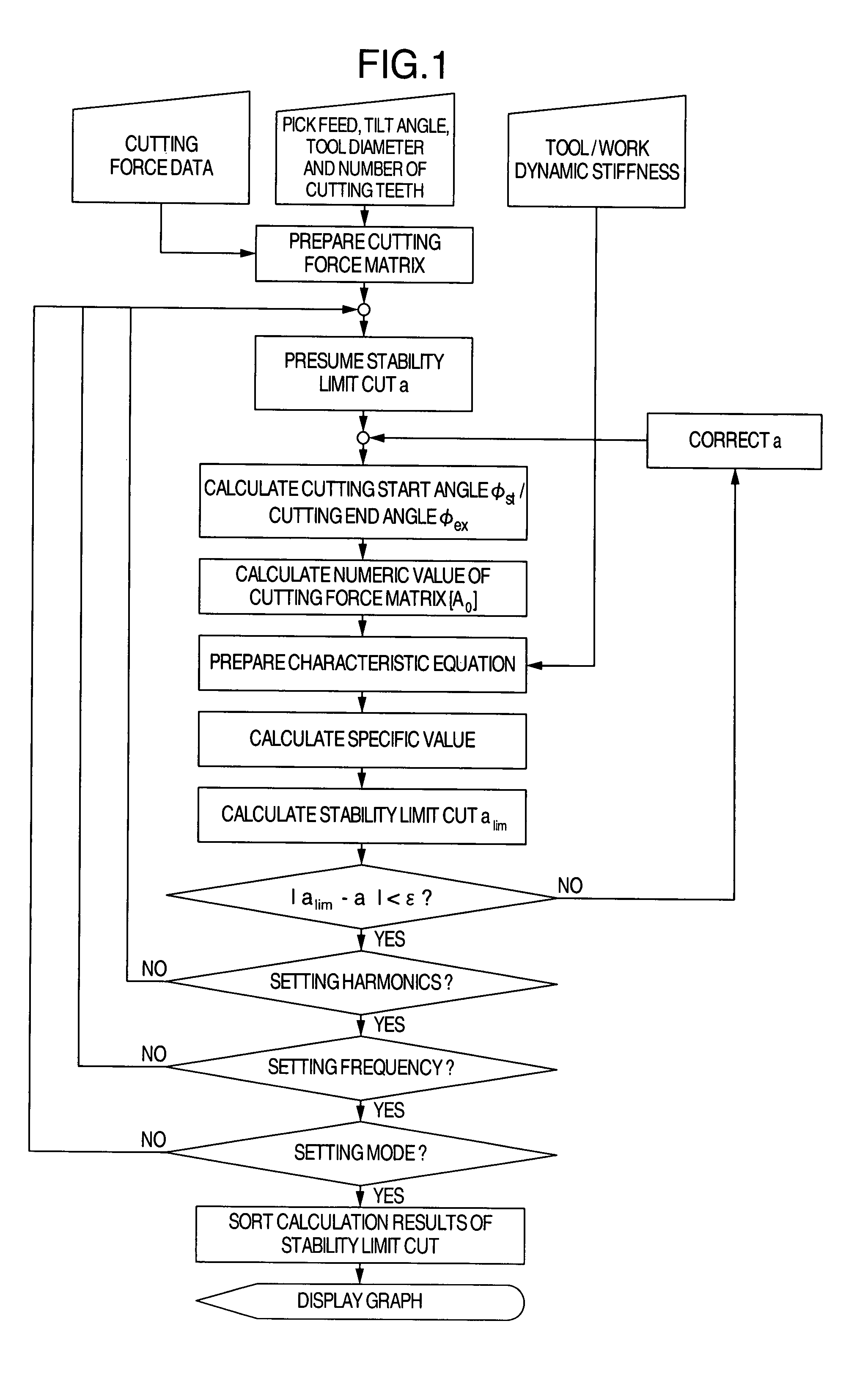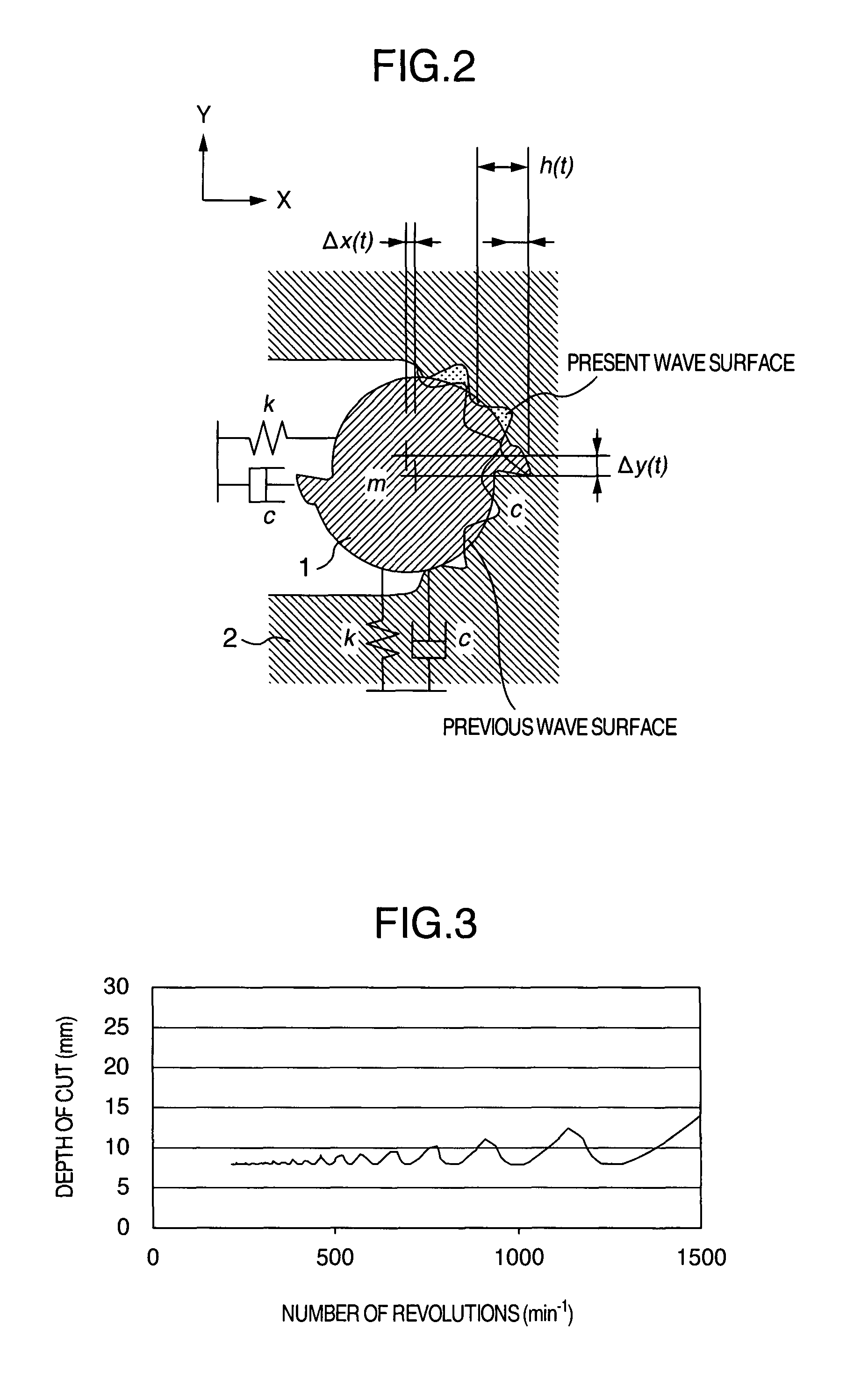Method for estimating self-vibration of milling tool in the operating process
a technology of self-vibration and milling tool, which is applied in the direction of adaptive control, process and machine control, instruments, etc., can solve the problems of generating noise or vibration of processing machines, reducing the number of correction steps, and reducing the relative vibration of tools and work
- Summary
- Abstract
- Description
- Claims
- Application Information
AI Technical Summary
Benefits of technology
Problems solved by technology
Method used
Image
Examples
Embodiment Construction
[0031]A method for estimating a self-excited cutting vibration during oblique cutting according to the present invention will hereinafter be described with reference to the drawings.
[0032]First, in the method according to the present invention, as shown in a flow chart of FIG. 1, the followings are given as input values:
[0033](1) a cutting force coefficient determined by a combination of a tool geometry of a cutting tool and a material of a work;
[0034](2) a pick feed amount Pf, a work oblique angle γ, a tool diameter R and the number N of cutting teeth; and
[0035](3) dynamic stiffness of the tool and the work.
[0036]As described in the above document, in FIG. 2, a fluctuation amount h(φj) of a chip thickness at a time when a j-th cutting tooth is disposed at an angle φj from a direction (a Y-direction) perpendicular to a feeding direction, that is, an X-direction, is given by Equation (5):
h(φj)=(Δx cosφj+Δy sin φj)(φj) (5)
in which Δx, Δy are displacement amounts of the center of the ...
PUM
| Property | Measurement | Unit |
|---|---|---|
| stability | aaaaa | aaaaa |
| cutting force | aaaaa | aaaaa |
| dynamic stiffness | aaaaa | aaaaa |
Abstract
Description
Claims
Application Information
 Login to View More
Login to View More - R&D
- Intellectual Property
- Life Sciences
- Materials
- Tech Scout
- Unparalleled Data Quality
- Higher Quality Content
- 60% Fewer Hallucinations
Browse by: Latest US Patents, China's latest patents, Technical Efficacy Thesaurus, Application Domain, Technology Topic, Popular Technical Reports.
© 2025 PatSnap. All rights reserved.Legal|Privacy policy|Modern Slavery Act Transparency Statement|Sitemap|About US| Contact US: help@patsnap.com



